Note: This website was automatically translated, so some terms or nuances may not be completely accurate.
We want to be there for life's seasons.
This series follows Dentsu Inc.'s 'Company Design' team as they uncover the secrets behind 'vibrant companies' with 'originality.' Episode 31 introduces Heian Shindo Kogyo, the company that transformed the ubiquitous "tension rod" into an essential item for designing daily life. From newspaper reporter to third-generation president of a long-established household goods manufacturer, President Kayoko Takeuchi shares the background and secrets behind her family business's remarkable growth.

After she readily agreed to our interview, I pondered what questions to ask President Takeuchi. She is now a media darling, a true "person of the moment." Her PR activities include dressing up as the "Tsuppari Girl," opening her home to the public, and educational efforts as the "Tsuppari Rod Doctor"... To simply label these as "life proposals for better living" feels like a huge understatement.
Tsuppari rods, tsuppari rods... Everyone knows that product. I understand (or so I thought) the brilliance of Heian Shindo Kogyo, the company that expanded its possibilities. They brought something taken for granted into the spotlight. They even developed a new product that stood the traditionally horizontal tension rod upright. They combined it with construction materials. Amazing, isn't it? It's like Columbus's egg. Where does that kind of thinking come from? But asking that question might disappoint readers, and most of all, President Takeuchi.
While pondering this, an idea suddenly struck me: It's each individual customer who completes the tension rod. If that's the case, could it be that the hugely successful tension rod is actually an incomplete brand? Precisely because it's not a finished product, more fans (including insiders) emerge who want to make it better. Communities among these fans also expand. And indeed, the interview unfolded with such stories emerging one after another.
Written by: Hajime Yakushiji (Dentsu Inc. BXCC)
Switching from pen to rod
"Neither I nor my husband (now Managing Director of Heian Shindo Kogyo) are fixated on a revenue model," says President Takeuchi. "Before taking over the family business, I was a newspaper reporter, and my husband was a prefectural government employee. So, inevitably, Before taking over the family business, I was a newspaper reporter, and my husband was a prefectural government employee. So, I inevitably view things from a sociological perspective, while my husband sees them from a design standpoint," says President Takeuchi. It doesn't seem like a dramatic, manga-like story of breaking a cherished pen, grabbing a support rod, and charging headlong into the cutthroat business world.
When taking over this long-established company with its staple (stable) products, the Takekawa couple prioritized addressing the gap between their vision and reality. "We agonized over whether our products truly delighted customers or served society. But recognizing that gap meant there must be something we could do. Of course, figuring out what that 'something' is and how to achieve it is still a process of trial and error."
The first step in this trial and error was changing the packaging design. "We had a design from 20 years ago, with copy that had been used for 20 years too. Something like 'The New Hope for Storage and Organization.' It's like, 'New hope from what era?' (laughs)." Ah, I understood clearly then – this person doesn't see either the "pen" or the "tension rod" as mere tools to meet the needs of the world (readers or customers).

Born in Hyogo Prefecture in 1982. After graduating from university, worked as a reporter covering police and government affairs at a newspaper. Left the company in 2009 and joined Heian Shindo Kogyo, run by her father, the following year. Became President at age 32 in 2015. Beyond its flagship tension rod, the company develops brands like "LABRICO" and "DRAW A LINE" utilizing its core technology. As a "long-established venture" blending tradition and innovation, it continues developing products aligned with the times. In 2021, she received the Kansai Business Circle Seminar Award 2021 "Shining Woman Award."
I am supported by "bars"
Tension rods are your (the customer's) reliable "partner"! This is President Takeuchi's signature response to the common media question: "What does a tension rod mean to you (President Takeuchi)?" I find it truly refreshing and utterly charming.
When she was torn between continuing as a newspaper reporter or stepping into the family business, her husband, Kazuhiro—who could be called her "lifelong partner"—encouraged her, saying, "You have the foundation of Heian Shindo. Isn't that a tremendous blessing?" Before her lay the "tension rod" business, now generating only about half its peak sales. Merely introducing it like this involves listing the character for "rod" repeatedly, but it seems true that President Takeuchi's tsunpari management began, somehow without her realizing it, supported by various kinds of "rods."
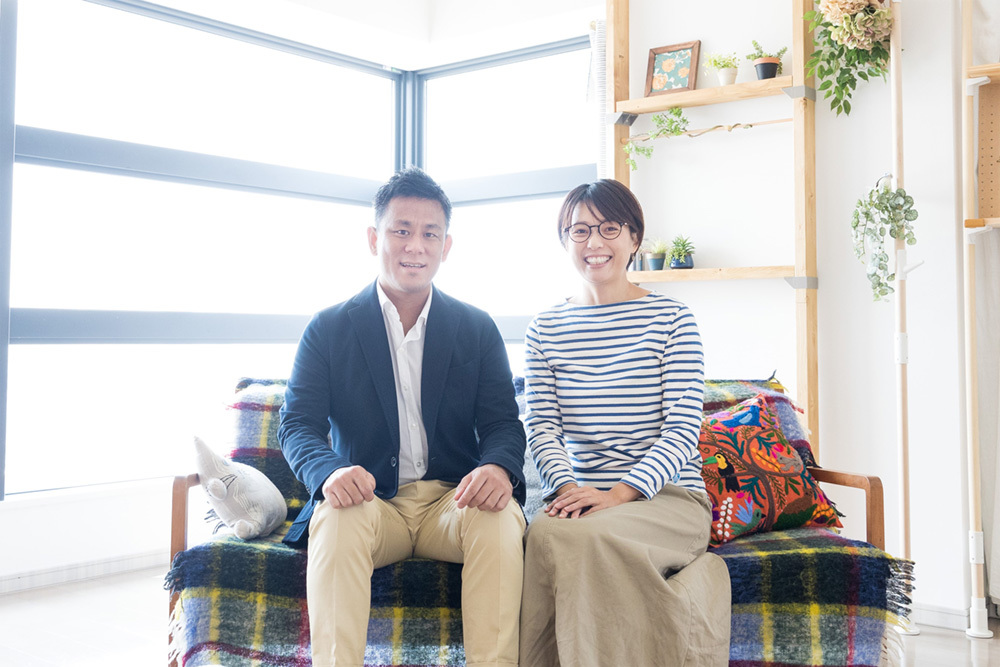
With his husband, "Kazu-san" (discussed later).
Kazuhiro Takeuchi: Managing Director, Heian Shindo Kogyo. Born in Shiga Prefecture in 1980. Licensed Class 1 Architect. Left Shiga Prefectural Government in 2014 to become Managing Director of Heian Shindo Kogyo. He and his wife, Kayoko, the third-generation President, run the company together as a team.
Lifestyle changes with life stages
Before the interview, I came across President Takeuchi's phrase "life stage" and was struck by its insight. In homes of the past, there was always a "closet" for storing futons. When night fell, you'd pull the futon out of that closet to sleep. Come morning, you'd put the futon back into the "closet." Then you'd pull out the low table to use the newly freed space.
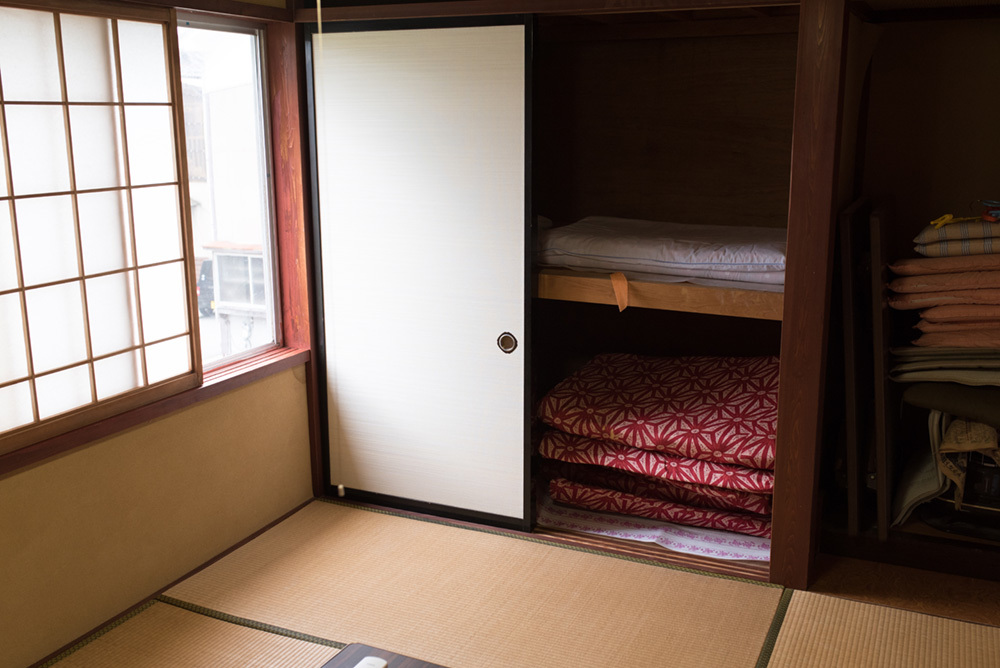
Such familiar styles inevitably change with the times. President Takeuchi doesn't dismiss this as mere trends coming and going. He sees it as the "life stage" changing with the times, or rather, changing for each family. For example, he questions whether a dedicated children's room is truly necessary for young children. When a family reaches that unique stage (season) where "a corner of the living room becomes the children's room," what can the tension rod do? That kind of thinking sparks the creation of new products.
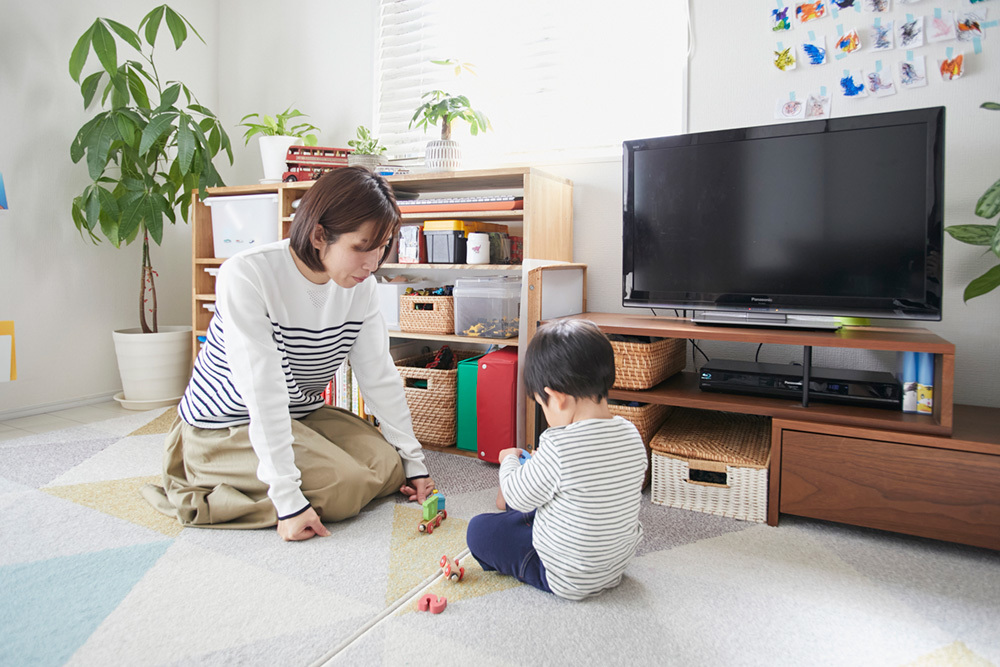
...Up to this point, I could imagine it to some extent based on information gathered before the interview. What surprised me was the perspective that "companies also have their own unique life stages." Wanting to be a stylish company suited to the current era is something every business leader naturally desires. But President Takeuchi's thinking is different. "I believe it's more important to think, through trial and error, about what stage our company is currently in and what stage we should aim for next, rather than focusing on superficial things like whether we look 'now' or 'stylish'."
President Takeuchi emphasizes that organizational strategy holds equal weight to business strategy. "Business strategies that treat customers and partner companies like gods are certainly important. But if you lack the perspective of the stage the organization itself is at when delivering that strategy to the world, then true management and true branding become nothing more than pie in the sky."
Adjust means "to adapt to the other party."
The word "adjust" is inherent to tension rods. It implies fitting perfectly anywhere, easily. You could call it "just fit." "That's certainly true, and we pursue that aspect thoroughly in terms of functionality. But I think the essence of adjust is about being close to the other party," says President Takeuchi.
"The other party"? This is profound. "Walls are the other party. Our customers' lives are the other party. To truly align with them, beyond advanced technology, I believe we need the sensitivity to respond to things like, 'Ah, that would be helpful.'" And what he says next is equally intriguing. "Our job is figuring out how to deliver that at a reasonable price. We're not dealing with art or high-tech gadgets; what we provide is ultimately a mass-market product. It's about how we leverage long-established techniques to drive innovation. Can we make our customers happy? That, I believe, is what it means to be close to them."
The values a company cherishes, the charm that radiates from its brand, and the shared sense of excitement with customers... This perfectly embodies the ideal state—or rather, the ideal form—of a company's business policy, goals, and plans, as defined by the MVV (Mission/Vision/Values) we often hear about these days.
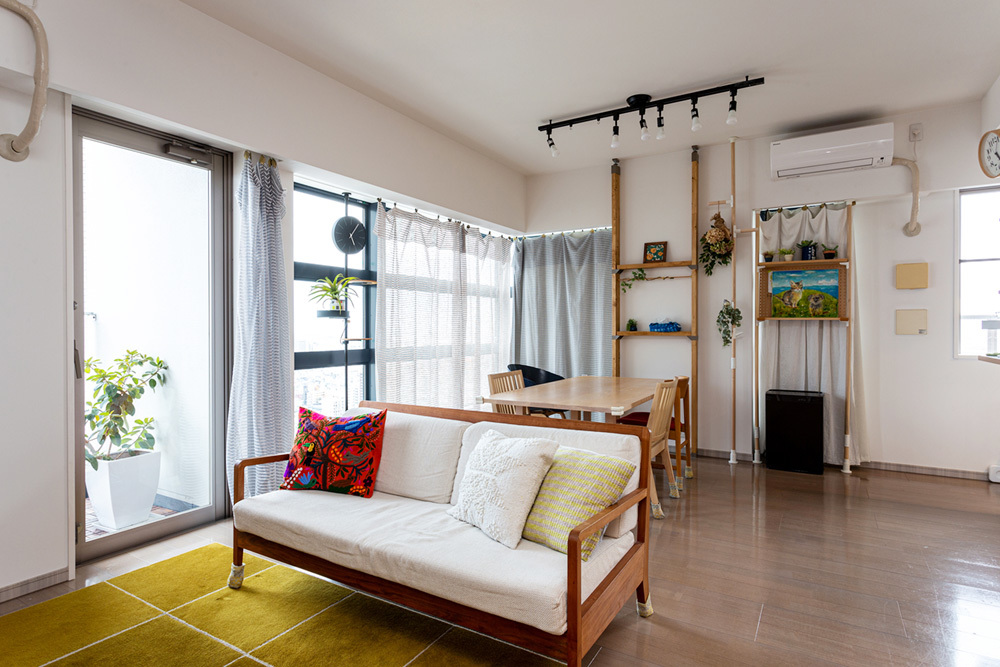

When inspiration strikes, "Kurasugae"
From a tension rod company to a "living transformation" company. That's the future corporate vision President Takeuchi aims for. Unbound by the conventions of limited living spaces (boxes), we will continue proposing solutions that fit each life stage. "But if that becomes something we manufacturers impose, I think it's no good. What we want to realize are our customers' unspoken dreams and ideals, not my own or our company's."
Inspired by President Takeuchi's vision, veteran craftsmen and designers and concept creators brought in from outside rally together, fired up to take on the challenge. The "Tsuttsupari-jo" (Editor's note: Please search online) doesn't seem to be just a character confined to advertising campaigns.
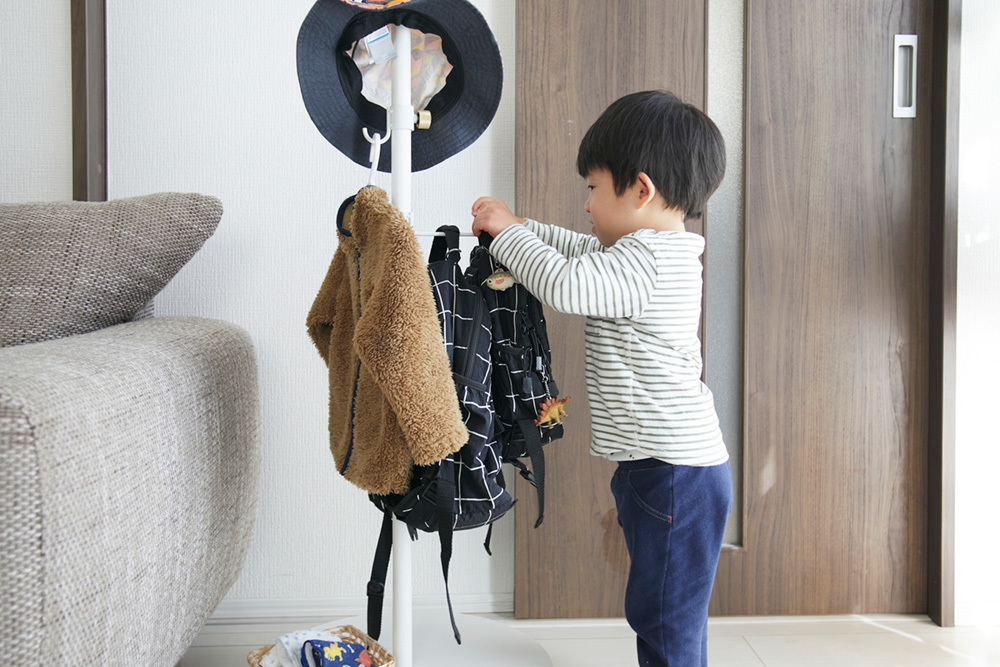

Visit Heian Shindo Kogyo's website here.
Furthermore, Heian Shindo Kogyo's new promotion starts on November 6!
For details, click here.
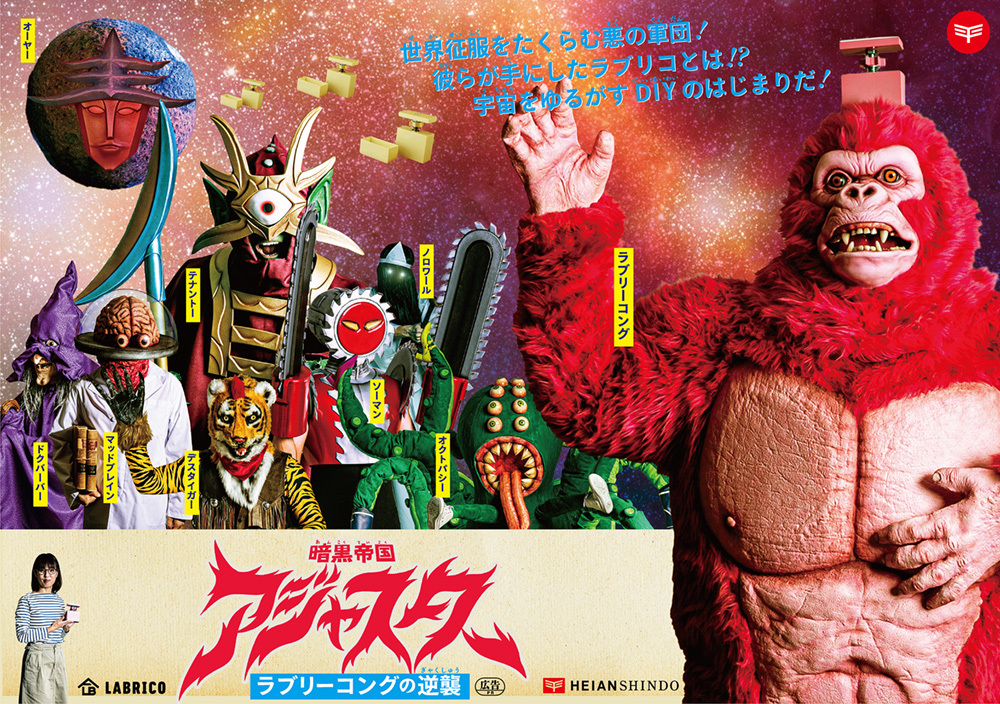
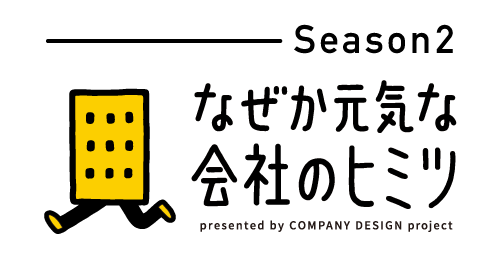
This series follows Dentsu Inc. 'Company Design' team as they uncover the secrets of 'vibrant companies' with true originality. Episode 31 featured Heian Shindo Kogyo, the long-established manufacturer that transformed the ubiquitous 'tension rod' into an essential item for designing daily life.
See Season 1 here.
Visit the "Company Design" project site here.
[Editor's Note]
At the end of the interview, as usual, the editorial team posed a rather out-of-the-blue question to President Takeuchi: "What's the story behind that blue striped shirt, which has become something of a trademark for you?" It was the kind of question that threatened to overshadow all the valuable insights gathered throughout the interview.
President Takeuchi showed a momentary look of surprise, "Huh?" but quickly broke into a mischievous smile and replied, "Well, you see, it's meant to evoke the image of a white tension rod. No one ever picks up on it, though. (laughs)" Ah, I see. So the message wasn't in the blue stripes themselves, but in the "white line" that makes them stand out.
"By the way, as a minor detail, at our company we address each other by last name, like 'Mr./Ms. [Last Name]', not by job title. Unfortunately, there are two Takekinis in the company, so we call each other Kazu and Kayo. Actually, I once suggested we adopt English nicknames like at big foreign companies, saying it was fine to call me Kiki, but nobody took me seriously (laughs)."
Kiki, of course, was inspired by that universally known, beloved character. "I love how she's so earnest about living, how she's constantly bumbling through everything she does, yet she never gives up, rolling with the punches." I suddenly understood why people gather around President Takeuchi—not just for the tension rod—and realized I had already become one of them.
Was this article helpful?
Newsletter registration is here
We select and publish important news every day
For inquiries about this article
Back Numbers
Author

Hajime Yakushiji
Dentsu Inc.
Business Transformation Creative Center
Planner
Responsible for solution-neutral communication design through to product and business development. Daily exploration of the intersection between business, creative, and technology.




